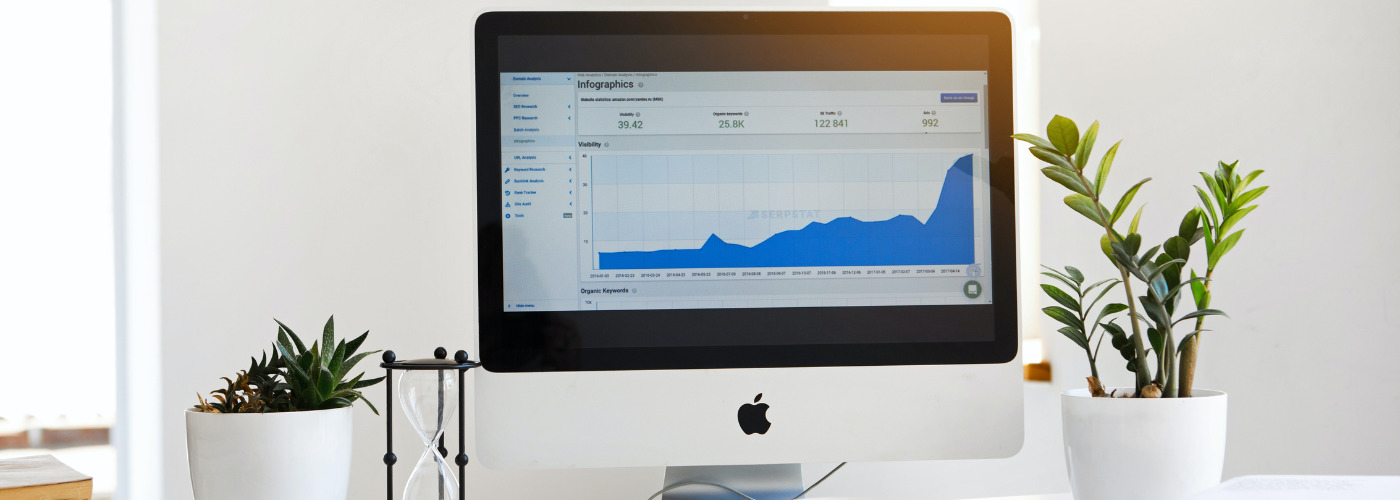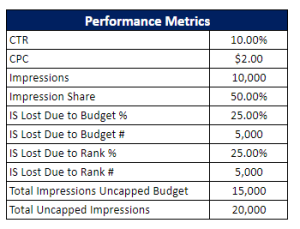The Evolution of Google Ads Match Types

In the realm of online advertising, Google Ads has long been a cornerstone for businesses seeking to connect with their target audience through Pay-Per-Click (PPC) campaigns. Over time, Google has continually refined its advertising platform, including the evolution of match types. While match types initially provided advertisers with greater control and precision, there has been a noticeable shift towards automation, leading to concerns over diminishing advertiser control. In this article, we will explore the journey of Google Ads match types, examine the impact on advertisers, discuss the challenges they face, and review the opportunity this has created for advertisers to grow.
1. Broad, Phrase, and Exact Match
The introduction of broad match marked the beginning of a journey for Google Ads advertisers. Advertisers were excited about the prospect of reaching a wider audience and gaining visibility. However, as broad match keywords cast a wide net, advertisers soon realized that this came at the cost of control and relevance. Ads were displayed for a plethora of unrelated searches, leading to wasted ad spend and diluted campaign performance.
This is where phrase and exact match keywords came in, with the goal of restoring control and precision for advertisers. Phrase match allowed advertisers to target keyword phrases in a specific order by using quotation marks, while exact match ensured ads only appeared for exact keyword matches. Advertisers created many variations of their keywords to ensure they would show up for all relevant searches, including singular and plural variants, as well as common misspellings.
With phrase match and exact match, advertisers could fine-tune their campaigns, reaching a more relevant audience and optimizing their budget for maximum impact. Advertisers gained a sense of control over their PPC campaigns, resulting in improved click-through rates and higher conversion rates.
2. Broad Match Modifiers
Recognizing the need for a middle ground between reach and relevance, Google introduced modified broad match. This match type offered advertisers the ability to include specific keywords within broad match by adding a plus sign (+) before them. While broad match modified expanded reach, it still provided a certain level of control over ad targeting. Advertisers could cast a wider net while maintaining some relevance, striking a delicate balance. However, it was the last significant update that retained a semblance of control before Google’s subsequent emphasis on automation.
3. Close Variants
With the introduction of close variants, Google expanded the boundaries of match types. While this expansion seemed advantageous at first glance, it signified a shift towards automation. Close variants allowed ads to appear for searches that included variations of target keywords, such as misspellings or singular/plural forms. If the keyword the user searched had a similar meaning to the keyword you were bidding on, then your ad would appear. This applied to all three match types, which was significant as that meant exact match keywords were no longer an “exact” match. This decreased advertiser control as searches that may seem like close variants were matching out to keywords that were designed to only match out to an exact variation. This caused a significant increase in the importance of well-managed negative keyword sets.
4. User Intent
With the integration of user intent into the matching process, advertisers now rely on Google’s algorithms to decipher the context and intent behind search queries, matching them to relevant keyword bids. This shift towards automation means that advertisers must trust Google to accurately interpret user intent and deliver their ads to the right audience. While this automated approach brings efficiency and scalability, it also requires advertisers to have faith in Google’s algorithms and data-driven decision-making. Advertisers are encouraged by Google to embrace the role of strategic overseers, focusing on ad copy, targeting strategies, and understanding their audience, while entrusting Google to optimize the matching process based on user intent.
As Google increasingly focuses on automation and machine learning, advertisers have pivoted to taking on a more strategic role in account management. Google’s algorithms take the reins, making decisions on when and where ads appear. This automation brings efficiency and ease of management for advertisers as this allows them to focus on deeper analysis of campaign performance. The evolving landscape of Google Ads match types, coupled with automation, has led to several implications for advertisers:
- Reduced Precision: Advertisers have less control over which specific keywords trigger their ads. As a result, there is a risk of displaying ads to less relevant or unqualified audiences, potentially leading to lower conversion rates.
- Limited Budget Control: With automation playing a more significant role, advertisers may find it challenging to allocate their budget effectively. Automated bidding strategies can quickly deplete budgets without clear visibility into the decision-making process.
- Dependency on Machine Learning: Advertisers must adapt to Google’s increasing reliance on machine learning algorithms. This entails learning to optimize campaigns within the constraints of automated systems, embracing performance insights, and making data-driven adjustments.
- Emphasis on Copy and Strategy: As control over match types diminishes, advertisers need to focus on developing compelling ad copy and refining their targeting strategies to maximize the impact of their campaigns
- Importance of Negative Keywords: With a broader range of search terms being matched out to, effective negative keyword management is critical to success. This ensures that ads are displayed to the most relevant audience, which increases the likelihood of attracting qualified leads and potential customers.
The evolution of Google Ads match types has brought both benefits and challenges for advertisers. While the initial match types provided control and precision, Google’s emphasis on automation and the introduction of close variants have allowed advertisers to save time by not having to build out extremely granular keyword sets that constantly need to be refined. While there is less control by advertisers, there are still ways to ensure they are reaching their target audience through well thought out match type strategies and negative keyword management. Relying on Google to accurately identify user intent has given advertisers more time to focus on strategic initiatives, ad copy development, landing page optimization, and more. Advertisers must adapt to the changing landscape, navigating the complexities of automated systems while finding new ways to optimize their campaigns. Balancing the benefits of automation with the need for customized targeting and precision remains a key challenge in the world of PPC advertising.
Want to learn more about how to navigate the increasingly complex world of PPC advertising? Reach out to the team at sales@synapsesem.com to learn more about our comprehensive services.
How to Use Impression Share to Project PPC Budget
PPC advertising budgets can be one of the most difficult tasks for marketers to figure out as there are many factors affecting this decision. But don’t worry, Synapse is here to help. While it may seem daunting, there are a number of valuable (yet often overlooked) metrics that can be instrumental in figuring out the optimal advertising budget based on your business and your goals. These include impression share and impression share lost due to budget:
- Impression share: The impressions you’ve received divided by the estimated number of impressions you were eligible to receive.
- Lost IS (Budget): The percentage of time that your ads were not shown on the Search Network due to insufficient budget.
Using these key metrics, we can project out PPC budgets based on your goals, to ensure your advertising efforts are effective and efficient. Here’s a step-by-step guide to help get you started:
Determine Your Advertising Goals
Are you looking to increase brand awareness, drive traffic to your website, or generate leads? Your advertising goals will help you determine how much you should be spending on advertising each month. Answering these questions can help determine how aggressive you want to be with your budgets.
Gather All Relevant Data
Pull the following data from the “Campaigns” tab (make sure to add any columns that are not already showing) for the last complete month of data to ensure you are using the most up-to-date statistics for your projection.
- Search Lost IS (Budget)
- Search Lost IS (Rank)
- Search Impression Share
- Impressions
- Clicks
- CTR
- Avg CPC
- Cost
Adjust Data to Create Average Monthly Numbers
Each month has a different number of days, and seeing that we are projecting an average month of budget, we need to proportionally adjust the data to create a true monthly projection. This applies to impressions, clicks, and cost:
Ex. (Impressions divided by number of days in the month) multiplied by 30.4 (average number of days in a month)
Calculate Actual Impression Numbers
In order to figure out the amount of spend needed to capture impressions lost due to low budgets, we need to figure out the actual number of eligible impressions:
Total Eligible Impressions = Impressions divided by Search Impression Share
Search Lost IS budget number = Search Lost IS Budget Percentage multiplied by Total Impressions Eligible For
Search Lost IS Rank number = Search Lost IS Rank Percentage multiplied by Total Impressions Eligible For
Calculate Uncapped Spend
Now we are ready to create projections based on the total number of eligible impressions:
Total Impressions Uncapped Budget = Impressions divided by Total Impressions Eligible For
Now that we have calculated these metrics, we can get a much clearer picture of how increasing the budget will impact performance. Your final inputs should look something like this:
From here, we can create monthly projections to see how increasing impression share through budget increases will impact clicks, conversions, and revenue:
In this example, we can see impressions, clicks, cost, conversions, customers, and revenue all increase by 50%. While the actual numbers increase, the metrics (CTR, CPC, CVR, etc.) stay the same. In reality, the actual numbers would likely not all increase at the exact same rate, but the purpose of this exercise is to provide an estimate of how increasing budget and impression share will affect overall performance.
Warning
One method of calculation to beware of is adding the percentage of impression share lost due to budget back to your current impressions. For example, if your campaign received 1000 impressions last month at a 50% impression share and you lost 25% due to budget, it may seem logical to take 25% of 1000 (250) and add that to your total impressions (1000+250=1250). This method is incorrect as it bases the Lost IS (Budget) number on impressions you received, not total eligible impressions. If you received 1000 impressions at a 50% impression share, that means you were eligible for 2000 total impressions. Therefore, the Lost IS (Budget) of 25% actually comes out to 500 lost impressions. So, if you add back the 500 lost impressions to the 1000 impressions you received, you can project to receive 1500 impressions by increasing your budget.
Conclusion
Understanding the metrics of impression share and impression share lost due to budget can be crucial in projecting PPC budgets and optimizing advertising efforts. By following the steps outlined in this guide, marketers can gather all relevant data, calculate actual impression share numbers, and ultimately create projections based on the total number of eligible impressions. Marketers can use these metrics to estimate how increasing budget and impression share will affect overall performance. By doing so, they can make informed decisions about advertising spend and achieve their advertising goals.
Contact us at paul@synapsesem.com if you’d like to subscribe to the Synapse SEM newsletter, or to learn more about our evolving search engine marketing services.





